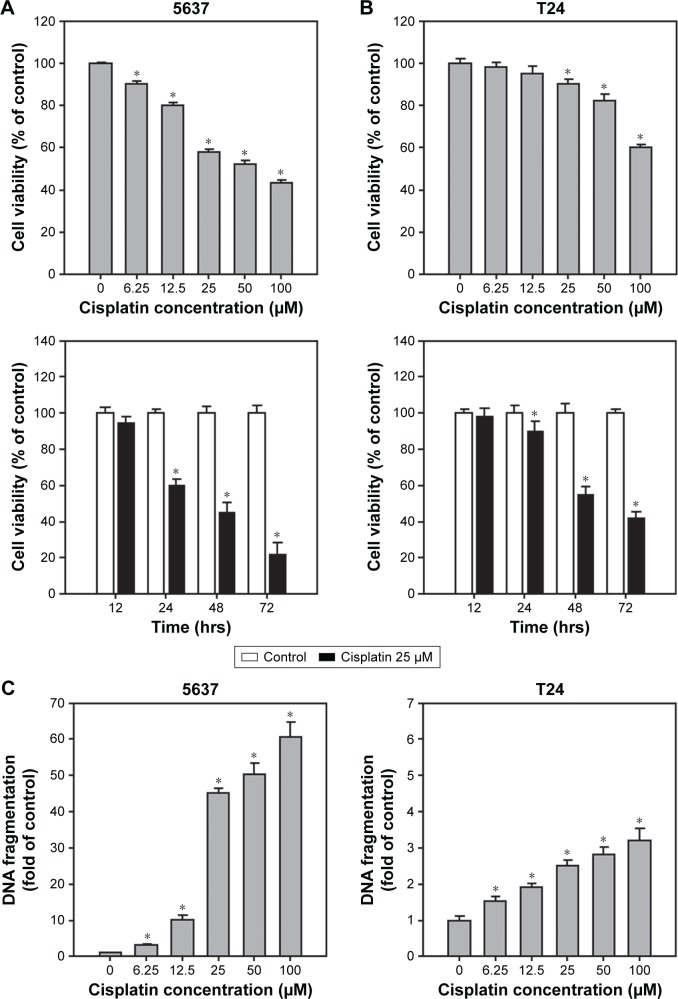Figure 1.
Cell type-specific, dose-dependent, and time-dependent cytotoxicity and apoptosis induced by exposure of 5637 and T24 cells to cisplatin.
Notes: (A) Cell viability of high-grade BC cells treated with 0–100 µM cisplatin for 24 hours. In 96-well plates, cells were seeded for 24 hours prior to treatment of indicated concentration of cisplatin. At 24 hours posttreatment, the cell viability was detected using WST-8 cell viability kit (Sigma). Two high-grade BC cell lines were used: 5637 (grade II TCC; mutant p53) and T24 (grade III TCC; mutant p53). (B) Cell viability of 5637 and T24 cells upon cisplatin treatment for 24, 48, and 72 hours. Cell viabilities of these cells treated with 25 µM cisplatin as described in (A). (C) DNA fragmentation detected in cells treated with 0–100 µM cisplatin for 24 h. Note that cisplatin induced differential cytotoxicity and apoptosis in these two high-grade BC cells. The values are shown as the mean ± SD of three independent experiments; *P<0.05.
Abbreviations: BC, bladder cancer; SD, standard deviation; TCC, transitional cell carcinoma; WST, water soluble tetrazolium.

